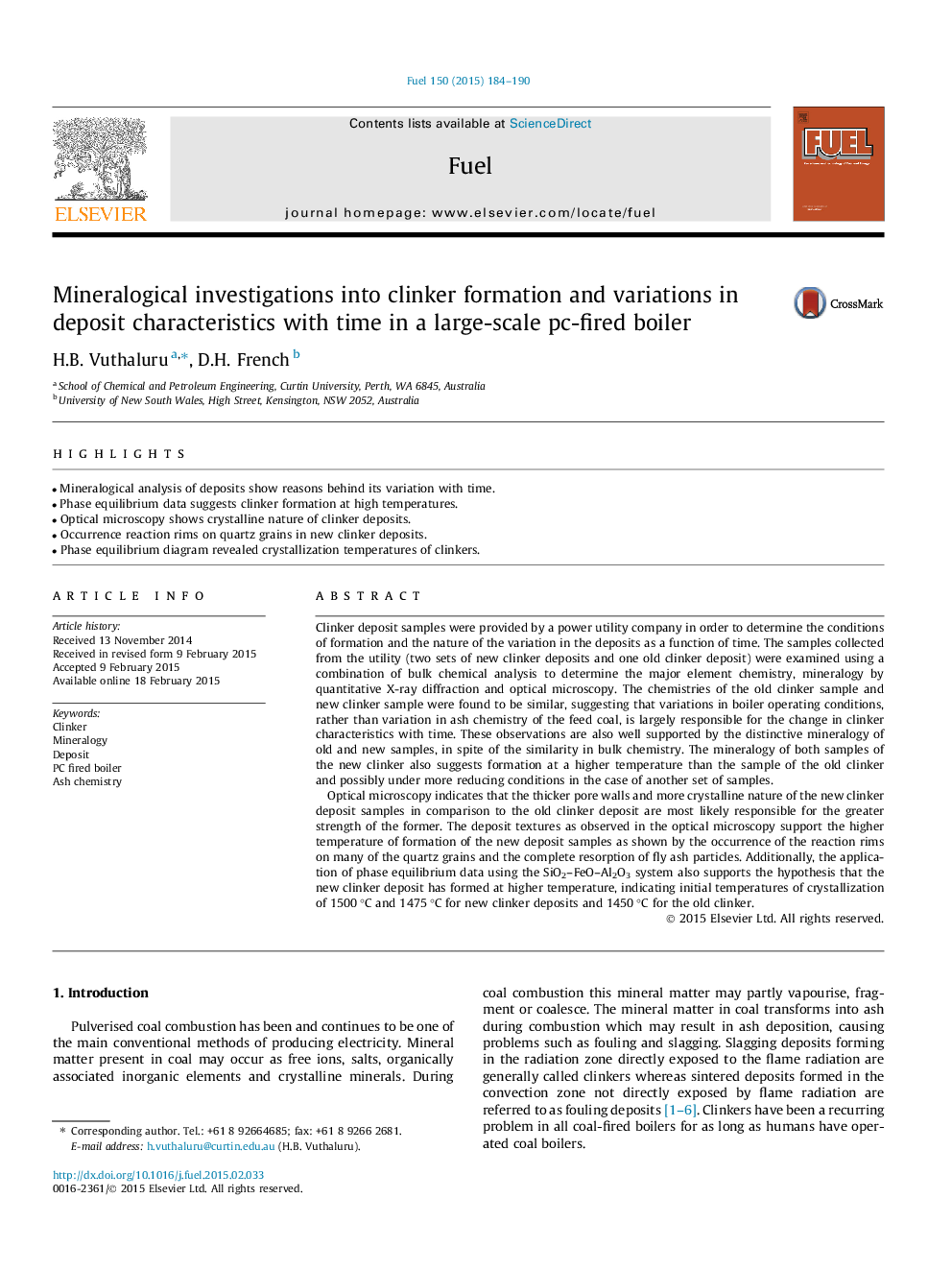| کد مقاله | کد نشریه | سال انتشار | مقاله انگلیسی | نسخه تمام متن |
|---|---|---|---|---|
| 205700 | 461123 | 2015 | 7 صفحه PDF | دانلود رایگان |
• Mineralogical analysis of deposits show reasons behind its variation with time.
• Phase equilibrium data suggests clinker formation at high temperatures.
• Optical microscopy shows crystalline nature of clinker deposits.
• Occurrence reaction rims on quartz grains in new clinker deposits.
• Phase equilibrium diagram revealed crystallization temperatures of clinkers.
Clinker deposit samples were provided by a power utility company in order to determine the conditions of formation and the nature of the variation in the deposits as a function of time. The samples collected from the utility (two sets of new clinker deposits and one old clinker deposit) were examined using a combination of bulk chemical analysis to determine the major element chemistry, mineralogy by quantitative X-ray diffraction and optical microscopy. The chemistries of the old clinker sample and new clinker sample were found to be similar, suggesting that variations in boiler operating conditions, rather than variation in ash chemistry of the feed coal, is largely responsible for the change in clinker characteristics with time. These observations are also well supported by the distinctive mineralogy of old and new samples, in spite of the similarity in bulk chemistry. The mineralogy of both samples of the new clinker also suggests formation at a higher temperature than the sample of the old clinker and possibly under more reducing conditions in the case of another set of samples.Optical microscopy indicates that the thicker pore walls and more crystalline nature of the new clinker deposit samples in comparison to the old clinker deposit are most likely responsible for the greater strength of the former. The deposit textures as observed in the optical microscopy support the higher temperature of formation of the new deposit samples as shown by the occurrence of the reaction rims on many of the quartz grains and the complete resorption of fly ash particles. Additionally, the application of phase equilibrium data using the SiO2–FeO–Al2O3 system also supports the hypothesis that the new clinker deposit has formed at higher temperature, indicating initial temperatures of crystallization of 1500 °C and 1475 °C for new clinker deposits and 1450 °C for the old clinker.
Journal: Fuel - Volume 150, 15 June 2015, Pages 184–190
